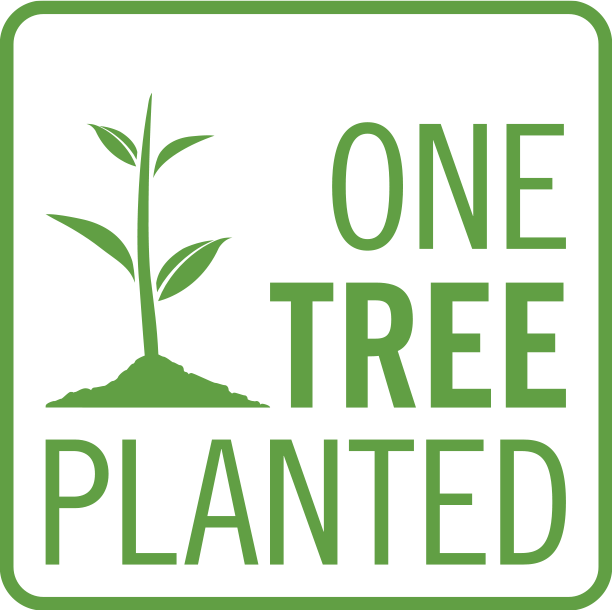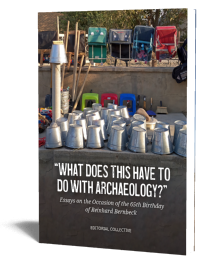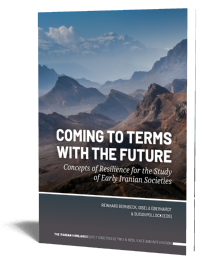ResourceScapes in the Iranian Highlands
Soils, Water, Wind and Minerals as Factors of Appropriation and Integration
Edited by Kristina A Franke, Thomas Stöllner, Nima Nezafati, Moslem Mishmastnehi & Martin Kehl | Forthcoming

ResourceScapes in the Iranian Highlands
Soils, Water, Wind and Minerals as Factors of Appropriation and Integration
Edited by Kristina A Franke, Thomas Stöllner, Nima Nezafati, Moslem Mishmastnehi & Martin Kehl | Forthcoming
Paperback ISBN: 9789464271386 | Hardback ISBN: 9789464271393 | Imprint: Sidestone Press Academics | Format: 210x280mm | ca. 234 pp. | The Iranian Highlands. Early Societies between Resilience and Integration 3 | Language: English | 21 illus. (bw) | 95 illus. (fc) | Keywords: archaeology; Iranian highlands; resources; resilience; minerals; palaeoenvironment; landscape; soil; mining; metallurgy; economic organisation; socio-political organisation; pre-modern societies; adaptive strategies | download cover | DOI: 10.59641/dd812gp | CC-license: CC BY 4.0
Publication date: 10-12-2025
-
Digital & Online access
Digital/Online version not (yet) available
-
Buy via Sidestone (EU & UK)
Get €5.00 discount on forthcoming books by using coupon code "PRE-ORDER" in your shopping cart!
-
Buy via our Distributors (WORLD)
For non-EU or UK destinations you can buy our books via our international distributors. Although prices may vary this will ensure speedy delivery and reduction in shipping costs or import tax. But you can also order with us directly via the module above.
For UK & other International destinations
For USA/Canada & other International destinations
-
Bookinfo
Paperback ISBN: 9789464271386 | Hardback ISBN: 9789464271393 | Imprint: Sidestone Press Academics | Format: 210x280mm | ca. 234 pp. | The Iranian Highlands. Early Societies between Resilience and Integration 3 | Language: English | 21 illus. (bw) | 95 illus. (fc) | Keywords: archaeology; Iranian highlands; resources; resilience; minerals; palaeoenvironment; landscape; soil; mining; metallurgy; economic organisation; socio-political organisation; pre-modern societies; adaptive strategies | download cover | DOI: 10.59641/dd812gp | CC-license: CC BY 4.0
Publication date: 10-12-2025

We will plant a tree for each order containing a paperback or hardback book via OneTreePlanted.org.
The Iranian highlands are characterized by very special resource conditions: although being dominated in large parts by aridity, the presence of ecological niches and specific weather phenomena, along with rich deposits of minerals and raw materials, provide livelihoods for pre-modern societies. These conditions have favoured the development of different but also specific practices based on intricate knowledge of individual resources. Ancient communities in this region have developed very special strategies that utilise the originally unfavourable circumstances to their advantage and have thus similarly shaped the landscape accordingly.
Everyday practices of resource acquisition and utilisation can thus be understood as culturally integrating latent factors, which in turn have to be examined diachronically in regards to their particular appearance, their temporal representation as well as their effects on subsistence and exchange systems. Unfavourable soil conditions were exploited, as were extreme winds, and the development of resilience strategies led to the development of new technologies that can also be helpful today in times of extreme climate conditions. Furthermore, resources are not only experienced as mere materials to support physical existence but are often also deeply interwoven with cosmic ideas and the spiritual well-being of humans and communities.
This volume represents the contributions of the international workshop on ‘ResourceScapes in the Iranian Highlands – Water, Wind and Minerals as Factors of Appropriation and Integration’ held on the 12th and 13th September 2022 at the Institute of Archaeological Studies, Ruhr-University Bochum in cooperation with the German Mining Museum.
This book is the third volume of a series published by the German-Iranian research cooperation The Iranian Highlands: Resiliences and Integration in Premodern Societies. The goal of the research project it is to shine a new light on communities and societies that populated the Iranian highlands and their more or less successful strategies to cope with the many vagaries, the constant changes and risks of their natural and humanly shaped environments.
The Appropriation and Integration of Resources in Premodern Societies in the Iranian Highlands: An Introduction
Kristina A Franke, Thomas Stöllner, Nima Nezafati, Moslem Mishmastnehi, and Martin Kehl
Part I: Fundamentals of a specific environment: climate, vegetation, soils and land-use, and potentials and practices in wind and water use
I-1 Soil Resources as Determinants of Archaeological Site Location in Iran
Martin Kehl, Babak Rafiei-Alavi, Zahra Lorzadeh, Yaser Jebreili
I-2 Hydro-Political Borders and Division of Space in the History of Iran
Majid Labbaf Khaneiki, Abdullah Saif Al-Ghafri
I-3 Holocene ecological changes in the Shahrizor Plain, Northern Iraq. New results from a plant macro study
Manfred Rösch, Eileen Eckmeier, Anette Kadereit, Elena Marinova, Maria Rabbani, Simone Mühl
I-4 Soil and Society. Multifaceted Character of Soil as a Resource
Zahra Lorzadeh, Babak Rafiei Alavi Alavijeh, Martin Kehl, Haeedeh Laleh
I-5 From Prosperity to Jeopardy. The Cultural Footprint of the 120-Day Wind in Sistan
Moslem Mishmastnehi
I-6 Analysis of Wind in Nishtafun Windmills. An Empirical Simulation
Mohammadjavad Mahdavinejad
I-7 Windcatcher. A Green Solution from Ancient Persian Vernacular Architecture for the Present Era
Payam Nejat, Fatemeh Jomehzadeh
I-8 The resource water, climate change, and resilience at Douzlākh
Natascha Bagherpour Kashani, Nicole Boenke, Rainer Herd
Part II: Appropriation and utilisation of raw materials and mining
II-1 Ancient Mining and Metallurgical Studies in Iran. Challenges and Future Perspectives
Nima Nezafati, Morteza Momenzedah, Thomas Stöllner, Prentiss de Jesus, Vincent C. Pigott, Ernst Pernicka, Barbara Helwing, Kamran Ahmadi
II-2 Mining at the Fringes. Mineral Resource-Procurement at the Iranian Highlands between Traditional Practices and State-Control
Thomas Stöllner, Abolfazl Aali, Iman Mostafapour, Nima Nezafati, Hande Oezyarkent, Fabian Schapals, Hamed Zifar
II-3 Bronze Age Mining and Husbandry. Isotopic Analysis of Domestic Animal Mobility in Iranian Highlands and Central Asia
Hande Özyarkent, Thomas Stöllner
II-4 Ancient Mining and Settlement at the “Modern” Lead-Silver Mine of Shakin, NW Central Iran. A Preliminary Approach
Fabian Schapals, Iman Mostafapour, Hamzeh Karimi, Nima Nezafati, Behnam Ghanbari, Thomas Stöllner
II-5 Mobility and Resource Management. The Mining Landscape of Nishapur in the Islamic Period
Zahra Lorzadeh, Haeedeh Laleh
II-6 Recent Studies on Technology and Provenance of Tin Bronze Metallurgy on the Prehistoric Iranian Plateau
Omid Oudbashi
Dr. Kristina A Franke
Kristina A Franke is a postdoctoral researcher at the Ruhr-University Bochum, Institute of Archaeological Sciences, and an associate of the Deutsches Bergbau-Museum Bochum and the University of New England, Australia. She received her doctorate in archaeology and archaeometallurgy at UCL, London, having studied Near Eastern Archaeology, Semitic Languages, and Prehistory and Early History at the Ludwig Maximilian Universität, München and The Technology and Analysis of Archaeological Materials at UCL, London.
Prof. Dr. Thomas Stöllner
Thomas Stöllner holds the Chair for Pre- and Protohistory at the Ruhr University Bochum in Germany and directs the Research Department and the Department of Mining Archaeology at the Deutsches Bergbau-Museum Bochum (DBM). His main area of research is the social and economic development of mining communities throughout pre- and protohistory with a focus on mining, the archaeometry of mining, and the archaeology of technology and social interrelations with the aid of studies in settlements and graveyards.
Prof. Dr. Nima Nezafati
Nima Nezafati studied geology and mineralogy at the University of Shahid Beheshti and the Research Institute for Earth Sciences in Tehran, as well as mineralogy at the TU Bergakademie Freiberg. He received his doctorate from the Faculty of Geosciences at the University of Tübingen on the Deh Hossein ore deposit. He has been Deputy Head of the Archaeometallurgy Research Department at the Deutsches Bergbau-Museum Bochum since the end of 2020, while he has been appointed as Honorary Professor at Ruhr University Bochum since 2023.
Moslem Mishmastnehi
Moslem Mishmastnehi is an archaeologist, with a background in cultural heritage conservation, working on various interdisciplinary topics. He has conducted extensive research on the history of Persian windmills and the production of their millstones, using both archaeological and archaeometric methods.
Prof. Dr. Martin Kehl
Martin Kehl is Professor of Physical Geography at the University of Koblenz and studies the significance of climate and humans for landscape evolution as well as the effects of environmental changes on pre-modern societies. He investigates sedimentary archives of past environmental change and human adaptation including soils, loess, lake sediments and anthropogenic deposits. His research focuses on the Late Quaternary and Iran.
Abstract:
The Iranian highlands are characterized by very special resource conditions: although being dominated in large parts by aridity, the presence of ecological niches and specific weather phenomena, along with rich deposits of minerals and raw materials, provide livelihoods for pre-modern societies. These conditions have favoured the development of different but also specific practices based on intricate knowledge of individual resources. Ancient communities in this region have developed very special strategies that utilise the originally unfavourable circumstances to their advantage and have thus similarly shaped the landscape accordingly.
Everyday practices of resource acquisition and utilisation can thus be understood as culturally integrating latent factors, which in turn have to be examined diachronically in regards to their particular appearance, their temporal representation as well as their effects on subsistence and exchange systems. Unfavourable soil conditions were exploited, as were extreme winds, and the development of resilience strategies led to the development of new technologies that can also be helpful today in times of extreme climate conditions. Furthermore, resources are not only experienced as mere materials to support physical existence but are often also deeply interwoven with cosmic ideas and the spiritual well-being of humans and communities.
This volume represents the contributions of the international workshop on ‘ResourceScapes in the Iranian Highlands – Water, Wind and Minerals as Factors of Appropriation and Integration’ held on the 12th and 13th September 2022 at the Institute of Archaeological Studies, Ruhr-University Bochum in cooperation with the German Mining Museum.
This book is the third volume of a series published by the German-Iranian research cooperation The Iranian Highlands: Resiliences and Integration in Premodern Societies. The goal of the research project it is to shine a new light on communities and societies that populated the Iranian highlands and their more or less successful strategies to cope with the many vagaries, the constant changes and risks of their natural and humanly shaped environments.
Contents
The Appropriation and Integration of Resources in Premodern Societies in the Iranian Highlands: An Introduction
Kristina A Franke, Thomas Stöllner, Nima Nezafati, Moslem Mishmastnehi, and Martin Kehl
Part I: Fundamentals of a specific environment: climate, vegetation, soils and land-use, and potentials and practices in wind and water use
I-1 Soil Resources as Determinants of Archaeological Site Location in Iran
Martin Kehl, Babak Rafiei-Alavi, Zahra Lorzadeh, Yaser Jebreili
I-2 Hydro-Political Borders and Division of Space in the History of Iran
Majid Labbaf Khaneiki, Abdullah Saif Al-Ghafri
I-3 Holocene ecological changes in the Shahrizor Plain, Northern Iraq. New results from a plant macro study
Manfred Rösch, Eileen Eckmeier, Anette Kadereit, Elena Marinova, Maria Rabbani, Simone Mühl
I-4 Soil and Society. Multifaceted Character of Soil as a Resource
Zahra Lorzadeh, Babak Rafiei Alavi Alavijeh, Martin Kehl, Haeedeh Laleh
I-5 From Prosperity to Jeopardy. The Cultural Footprint of the 120-Day Wind in Sistan
Moslem Mishmastnehi
I-6 Analysis of Wind in Nishtafun Windmills. An Empirical Simulation
Mohammadjavad Mahdavinejad
I-7 Windcatcher. A Green Solution from Ancient Persian Vernacular Architecture for the Present Era
Payam Nejat, Fatemeh Jomehzadeh
I-8 The resource water, climate change, and resilience at Douzlākh
Natascha Bagherpour Kashani, Nicole Boenke, Rainer Herd
Part II: Appropriation and utilisation of raw materials and mining
II-1 Ancient Mining and Metallurgical Studies in Iran. Challenges and Future Perspectives
Nima Nezafati, Morteza Momenzedah, Thomas Stöllner, Prentiss de Jesus, Vincent C. Pigott, Ernst Pernicka, Barbara Helwing, Kamran Ahmadi
II-2 Mining at the Fringes. Mineral Resource-Procurement at the Iranian Highlands between Traditional Practices and State-Control
Thomas Stöllner, Abolfazl Aali, Iman Mostafapour, Nima Nezafati, Hande Oezyarkent, Fabian Schapals, Hamed Zifar
II-3 Bronze Age Mining and Husbandry. Isotopic Analysis of Domestic Animal Mobility in Iranian Highlands and Central Asia
Hande Özyarkent, Thomas Stöllner
II-4 Ancient Mining and Settlement at the “Modern” Lead-Silver Mine of Shakin, NW Central Iran. A Preliminary Approach
Fabian Schapals, Iman Mostafapour, Hamzeh Karimi, Nima Nezafati, Behnam Ghanbari, Thomas Stöllner
II-5 Mobility and Resource Management. The Mining Landscape of Nishapur in the Islamic Period
Zahra Lorzadeh, Haeedeh Laleh
II-6 Recent Studies on Technology and Provenance of Tin Bronze Metallurgy on the Prehistoric Iranian Plateau
Omid Oudbashi
Dr. Kristina A Franke
Kristina A Franke is a postdoctoral researcher at the Ruhr-University Bochum, Institute of Archaeological Sciences, and an associate of the Deutsches Bergbau-Museum Bochum and the University of New England, Australia. She received her doctorate in archaeology and archaeometallurgy at UCL, London, having studied Near Eastern Archaeology, Semitic Languages, and Prehistory and Early History at the Ludwig Maximilian Universität, München and The Technology and Analysis of Archaeological Materials at UCL, London.
Prof. Dr. Thomas Stöllner
Thomas Stöllner holds the Chair for Pre- and Protohistory at the Ruhr University Bochum in Germany and directs the Research Department and the Department of Mining Archaeology at the Deutsches Bergbau-Museum Bochum (DBM). His main area of research is the social and economic development of mining communities throughout pre- and protohistory with a focus on mining, the archaeometry of mining, and the archaeology of technology and social interrelations with the aid of studies in settlements and graveyards.
Prof. Dr. Nima Nezafati
Nima Nezafati studied geology and mineralogy at the University of Shahid Beheshti and the Research Institute for Earth Sciences in Tehran, as well as mineralogy at the TU Bergakademie Freiberg. He received his doctorate from the Faculty of Geosciences at the University of Tübingen on the Deh Hossein ore deposit. He has been Deputy Head of the Archaeometallurgy Research Department at the Deutsches Bergbau-Museum Bochum since the end of 2020, while he has been appointed as Honorary Professor at Ruhr University Bochum since 2023.
Moslem Mishmastnehi
Moslem Mishmastnehi is an archaeologist, with a background in cultural heritage conservation, working on various interdisciplinary topics. He has conducted extensive research on the history of Persian windmills and the production of their millstones, using both archaeological and archaeometric methods.
Prof. Dr. Martin Kehl
Martin Kehl is Professor of Physical Geography at the University of Koblenz and studies the significance of climate and humans for landscape evolution as well as the effects of environmental changes on pre-modern societies. He investigates sedimentary archives of past environmental change and human adaptation including soils, loess, lake sediments and anthropogenic deposits. His research focuses on the Late Quaternary and Iran.
-
Digital & Online access
Digital/Online version not (yet) available
-
Buy via Sidestone (EU & UK)
Get €5.00 discount on forthcoming books by using coupon code "PRE-ORDER" in your shopping cart!
-
Buy via our Distributors (WORLD)
For non-EU or UK destinations you can buy our books via our international distributors. Although prices may vary this will ensure speedy delivery and reduction in shipping costs or import tax. But you can also order with us directly via the module above.
For UK & other International destinations
For USA/Canada & other International destinations
- Browse all books by subject
-
Search all books

We will plant a tree for each order containing a paperback or hardback book via OneTreePlanted.org.
You might also like:
© 2025 Sidestone Press KvK nr. 28114891 Privacy policy Sidestone Newsletter Terms and Conditions (Dutch)








